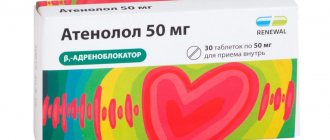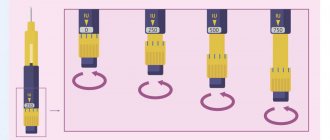The adrenal glands perform a very important function: they produce vital hormones - glucocorticoids, as well as hormones that support and regulate water and salt metabolism, as well as stress hormones adrenaline and norepinephrine, which, accordingly, supports the normal functioning of many body systems, metabolic processes and energy metabolism occurring in it and controls resistance to stressful situations.
In addition, the adrenal glands produce hormones that affect sexual function - adrenal androgens.
Diseases of the adrenal glands in endocrinology in adults and children are diseases that can seriously affect a person’s health, regardless of his gender and age. In some forms of adrenal gland pathology, there are pronounced symptoms that cannot be ignored.
Therefore, it is extremely necessary to consult a doctor for any manifestations of the disease in an adult or child. Medical invites you for consultations with high-level specialists and for special diagnostic procedures.
We offer an integrated approach to diagnosis and treatment, as well as the development of individual treatment and recovery plans for children and adults.
The structure and functioning of the adrenal glands
The adrenal glands are based on two structures:
- Brain matter.
- Cortical substance.
They are regulated by the nervous system.
Brain matter
The medulla is the main source of catecholamine hormones in the body - adrenaline and norepinephrine.
Adrenaline is the main hormone in the fight against stress. An increase in its production occurs during positive and negative emotions, for example, during injury or a stressful situation.
When exposed to adrenaline, the body uses reserves of accumulated hormone, which is manifested by the following reactions:
- a sudden surge of strength;
- increased breathing;
- pupil dilation.
The person feels stronger than usual, and the pain threshold is significantly reduced.
Norepinephrine is also a stress hormone, but its production occurs before the production of adrenaline. The impact is much weaker. Its function is to regulate blood pressure, which stimulates the work of the myocardium - the heart muscle.
Cortex
The adrenal cortex consists of several layers, each of which performs a specific function.
- Mesh zone.
- Bundle zone.
- Zona glomerulosa.
Androgens, sex hormones, are synthesized in the reticular zone. They are responsible for the development of secondary sexual characteristics and influence:
- state of libido - sexual desire in men and women;
- blood cholesterol and lipid levels;
- fat deposition;
- increase in muscle strength and mass.
Regardless of gender, each body produces both male and female sex hormones. The difference is in their quantity. For example, women synthesize estrogen and progesterone, which are responsible for reproductive function - conception and birth of children, but also testosterone in a small amount, which is considered the male hormone.
A comprehensive laboratory test aimed at assessing the functioning of the adrenal glands.
Synonyms Russian
Adrenal examination; adrenal function.
English synonyms
The function of the adrenal gland.
What biomaterial can be used for research?
Venous blood.
How to properly prepare for research?
- Limit carbohydrate intake for 14-30 days before the test.
- Eliminate alcohol from your diet for 24 hours before the test.
- Children under 1 year of age should not eat for 30-40 minutes before the test.
- Children aged 1 to 5 years should not eat for 2-3 hours before the test.
- Do not eat for 12 hours before the test; you can drink clean still water.
- Within 14-30 days before the study, discontinue (in consultation with your doctor) diuretics, antihypertensive drugs, steroids, oral contraceptives and estrogens.
- Avoid (in consultation with your doctor) taking renin inhibitors for 7 days before the test.
- Avoid (in consultation with your doctor) taking estrogens and androgens within 48 hours before the test.
- Completely avoid (in consultation with your doctor) taking medications for 24 hours before the test.
- Avoid physical and emotional stress for 72 hours before the test.
- Before drawing blood in a sitting position, it is recommended to rest or remain in this position for 120 minutes.
- Do not smoke for 3 hours before the test.
General information about the study
The adrenal gland consists of two different parts: the cortex and the medulla, which have different origins, structures and functions.
The medulla produces catecholamines, which include two main hormones: adrenaline and norepinephrine. They affect the activity of the cardiovascular system, glandular epithelium, processes of carbohydrate and fat metabolism, and thermogenesis. The cortex occupies about 70-80% of the organ's volume and produces a large group of hormones - corticosteroids. The cortex is divided into zona glomerulosa, zona fasciculata and zona reticularis. There are over 40 known substances isolated from this layer of the adrenal glands, some of which have hormonal activity. Corticosteroids affect various types of metabolism, the immune system and the course of inflammatory processes.
Hormones of the adrenal cortex are divided into two groups according to their action: glucocorticoid and mineralocorticoid, the former mainly affect the metabolism of carbohydrates, and the latter - the metabolism of minerals. Sex steroid hormones are synthesized in the reticular zone. It should be noted that this is a conditional division and the effect of hormones on metabolism is complex. Glucocorticoid hormones: cortisol, cortisone, corticosterone are synthesized in the middle (fascicular) layer of the adrenal cortex. They have a significant impact on the metabolism of carbohydrates and proteins. Minerolocorticoid hormones: aldosterone and deoxycorticosterone mainly regulate the metabolism of water and minerals.
Cortisol is a hormone, the main representative of glucocorticoids, synthesized in the zona fasciculata of the cortex. It is involved in the regulation of blood pressure, the metabolism of proteins, fats, carbohydrates, and protecting the body from stress. Stimulation of the synthesis and secretion of cortisol is regulated by adrenocorticotropic hormone (ACTH) via a negative feedback mechanism. ACTH is a hormone of the anterior pituitary gland, which is secreted under the influence of tropic factors of the hypothalamus according to a certain daily rhythm.
An increase in the level of cortisol in the blood is observed in Itsenko-Cushing syndrome. Its development may be associated with a benign or malignant tumor of the adrenal glands, as well as with long-term use of glucocorticosteroid drugs. It is characterized by symptoms such as obesity, the appearance of stretch marks on the skin of the abdomen, increased blood pressure, increased blood glucose levels, and impaired mineral metabolism. Also, an increase in the secretion of this hormone can be observed with ectopic release of ACTH in paraneoplastic syndrome by tumors of non-pituitary origin and other localization.
With primary adrenal insufficiency and Addison's disease, the production of glucocorticoids and mineralcorticoids decreases and the secretion of ACTH increases. A decrease in ACTH concentration can be observed with hypofunction of the adrenal cortex due to weakened pituitary function, with Itsenko-Cushing syndrome, with the administration of glucocorticoids.
Aldosterone is a hormone that is synthesized from cholesterol in the cells of the zona glomerulosa of the adrenal cortex. It regulates the maintenance of normal concentrations of sodium, potassium in the blood and normal circulating blood volume, and therefore blood pressure. Aldosterone mainly acts on the distal tubules of the kidney structure, stimulating the reabsorption of sodium ions and the secretion of potassium and hydrogen ions. There are daily fluctuations in aldosterone levels. An increase in the concentration of this hormone is observed in primary or secondary hyperaldosteronism. Primary hyperaldosteronism can occur due to a hormone-producing tumor of the adrenal gland, aldosteroma, or adrenal hyperplasia. Secondary hyperaldosteronism may result from decreased blood flow to the kidneys, decreased blood pressure, or decreased sodium levels, resulting in increased plasma renin activity. High aldosterone levels increase sodium reabsorption and potassium loss by the kidneys, leading to fluid and electrolyte imbalance. A decrease in hormone concentration is observed with damage to the adrenal glands or impaired aldosterone biosynthesis.
Sodium, potassium and chlorine are vital electrolytes, and adrenal hormones play a significant role in maintaining their levels. They are involved in maintaining water-electrolyte balance, acid-base balance, in the process of muscle contraction, conducting nerve impulses, maintaining normal balance of cells and the intercellular matrix.
What is the research used for?
- For the diagnosis of Itsenko-Cushing syndrome, Addison's disease;
- for differential diagnosis of the disease and various forms of Itsenko-Cushing syndrome;
- to assess the effectiveness of treatment for Itsenko-Cushing syndrome, Addison's disease;
- to evaluate the effectiveness of surgical or therapeutic treatment of hormone-synthesizing tumors;
- for screening diagnosis of primary or secondary hyperaldosteronism in combination with the determination of other hormones;
- to determine possible causes of imbalance of electrolytes: potassium, sodium, chlorine.
When is the study scheduled?
- If you suspect Itsenko-Cushing syndrome or disease (symptoms: obesity, the appearance of specific stretch marks on the skin of the abdomen, muscle dystrophy, increased blood pressure, increased blood glucose levels, impaired mineral metabolism) or Addison's disease (symptoms: muscle weakness, fatigue, decreased blood pressure, hypoglycemia, skin pigmentation);
- when monitoring the treatment;
- if ectopic release of ACTH is suspected in paraneoplastic syndrome;
- if you suspect dysfunction of the adrenal cortex;
- for postoperative and post-traumatic conditions;
- for a comprehensive diagnosis of the causes of increased blood pressure, including in young people;
- if you suspect water and electrolyte disturbances;
- with symptoms of hyponatremia (weakness, lethargy, confusion) and hypernatremia (thirst, decreased amount of urine output, convulsions, agitation;
- for symptoms of hypokalemia (malaise, thirst, polyuria, anorexia, low blood pressure, vomiting, decreased reflexes, ECG changes with decreased T waves) and hyperkalemia (excitability, diarrhea, cramps, oliguria, cardiac arrhythmia with sharp T waves and progressive gastric fibrillation) ;
- if acidosis or alkalosis is suspected with a possible deterioration of the condition, accompanied by prolonged vomiting, weakness, disorientation in space, impaired breathing and heart rhythm.
What do the results mean?
Reference values
For each indicator included in the complex:
- [06-064] Serum potassium
- [06-065] Serum sodium
- [06-066] Chlorine in serum
- [08-012] Adrenocorticotropic hormone (ACTH)
- [08-013] Aldosterone
- [08-030] Cortisol
Increases and decreases in indicators are varied and depend on the cause. Since some hormones interact through a negative feedback mechanism in the same disease or syndrome, the amount of one indicator can be increased and another decreased, and vice versa.
What can influence the result?
- Increased amount of salt in the diet, taking medications: diuretics, antihypertensives, steroids, non-steroidal anti-inflammatory drugs, oral contraceptives and estrogens;
- pregnancy.
Beam zone
This zone is responsible for the synthesis of glucocorticosteroids. They are responsible for protein, carbohydrate and fat metabolism in the body. Closely related to the production of insulin and catecholamines.
Glucocorticosteroids reduce the immune response, inhibit inflammatory processes, gradually suppressing them.
One of the hormones in the zona fasciculata is cortisol. It takes part in carbohydrate metabolism and preserves the body's energy resources. The level of cortisol in the body is constantly changing - there is more of it in the morning than in the evening or at night.
Zona glomerulosa
The zona glomerulosa of the adrenal cortex is responsible for mineral metabolism in the body. The hormones produced here normalize the functioning of the renal tubules, so excess fluid leaves the body, which, in turn, keeps blood pressure levels normal.
The following hormones are secreted in the zona glomerulosa:
- Aldosterone. Its function is to maintain the balance of sodium and potassium ions in the blood. The hormone takes part in water-salt metabolism, improves blood circulation, and increases blood pressure.
- Corticosterone is a hormone with low activity and is involved in mineral balance.
- Deoxycorticosterone also regulates water-salt balance, gives strength to the skeleton and muscle tissue.
Changing your diet
The high pace of life leads to the formation of unhealthy eating habits. People consume excessive amounts of sweet, starchy, fatty and fried foods. They artificially stimulate the body with strong tea, coffee, energy and alcoholic drinks. This negatively affects the functioning of the adrenal glands. The stimulation diet must comply with the following rules:
- Balanced diet
. Daily intake of proteins, fats and carbohydrates in normal amounts. - Maintaining water-salt balance
. Adhere to the rhythm of water intake and minimal salt intake. - Consumption of animal and plant foods
. They also include dairy products with a low fat content. - Including non-starchy vegetables and fruits
. Only foods high in potassium are excluded.
Doctors recommend increasing the consumption of natural sources of vitamin B5. It is found in cauliflower, eggs, peas, and garden herbs. The diet for normal functioning of the adrenal glands is similar to the principles of classical proper nutrition.
Important! Both three meals a day and split meals are acceptable.
If the patient has been eating incorrectly for a long time, consuming a minimal amount of protein and an abundance of carbohydrates, then they are gradually transferred to the correct diet. It is necessary to review the daily routine, add breakfast and eliminate late meals. Dinner no later than 3 hours before bedtime.
How do adrenal gland diseases manifest?
When the balance of hormones in the body is disturbed, its functioning occurs. Symptoms appear according to a dependence pattern, that is, a specific substance produced in the adrenal glands is responsible for a symptom unique to it. For example, with aldosterone deficiency, sodium is excreted from the body along with the urine, which lowers blood pressure and significantly increases the potassium content in the blood.
To avoid serious consequences, you need to consult a doctor at the first signs of adrenal disease. These include:
- muscle weakness;
- constant fatigue;
- severe weight loss is a consequence of decreased appetite;
- low stress resistance;
- high irritability;
- rapid and constant fatigue;
- sleep problems;
- dizziness, headaches.
Next, the most common diseases of the adrenal glands, which have their own symptoms and causes, require specific treatment tactics.
Addison's disease
Other names for Addison's disease are primary adrenal insufficiency and hypocortisolism.
A rare pathology, accounting for 50–100 cases per million per year. It is diagnosed in both women and men. Average age is from 20 to 40 years.
The disease affects all three zones of the adrenal cortex. Characterized by a deficiency in the production of corticosteroids. Violation of hormone synthesis causes serious complications in the body.
The cause of destruction of the adrenal cortex is pathogenic microorganisms that have entered the body - viruses, bacteria, fungi, as well as immune disorders.
Manifestations of Addison's disease:
- decreased blood pressure;
- fatigue, weakness, lack of physical strength;
- lack of appetite;
- disruption of the digestive system;
- pigmentation of the skin, the appearance of dark spots on the mucous membranes;
- chills;
- increase in body temperature.
To identify the disease, it is necessary to take tests to measure the level of cortisol in the blood. The condition of the adrenal cortex and the functioning of the glands are examined.
Treatment is taking medications containing corticosteroids throughout life. It is possible to administer hydrocortisone intramuscularly.
DOUBTED SUPPLEMENTS
Naturopaths often recommend questionable supplements. Wilson's website sells adrenal supplements - "Dr. Wilson's Original Formulas." The Adrenal Fatigue Quartet costs about $200 for a 30-day course at the minimum recommended doses. The website notes that the products' formula is "discovered by Dr. James L. Wilson for people suffering from adrenal fatigue," but the site is littered with footnotes that lead the reader to a small warning: "This formula has not been evaluated by the FDA and medications. This product is not intended to diagnose, treat, cure, or prevent any disease.” Nieman says that because these supplements are not regulated or approved by the Food and Drug Administration, there is no way to know what's in them, so she recommends patients stop taking them. Sometimes patients take crushed bovine adrenal glands, and Friedman has even seen patients given hydrocortisone for “adrenal fatigue.” Friedman says he sees counseling patients who suspect they have “adrenal fatigue” as an opportunity to “optimize the patient's health.” Some of the problems are related to an unbalanced diet, lack of exercise and healthy sleep. “You can help your patients overcome their complaints by recommending lifestyle changes,” he says. Nieman typically responds to patients asking for relief from “adrenal fatigue” by saying, “I don’t think your adrenal glands are actually malfunctioning, but some of your symptoms are reversible and I can help you get rid of them.” Thus, patients accept her point of view and can abandon the diagnosis of adrenal fatigue.
Source:
- The Myth of Adrenal Fatigue
https://endocrinenews.endocrine.org/myth-adrenal-fatigue/
Itsenko-Cushing's disease
Refers to neuroendocrine pathologies. The reason is a malfunction of the hypothalamic-pituitary system as a result of brain injury or infections suffered by a person. Characterized by the production of excessive amounts of corticosteroids by the adrenal glands.
Itsenko-Cushing's disease is a rare pathology. It is diagnosed mainly in women aged 30 to 45 years.
A malfunction in the hypothalamic-pituitary system provokes disturbances in the body. The connection between the adrenal glands, hypothalamus and pituitary gland is lost. Signals sent to the hypothalamus provoke excess production of hormones that release adrenocorticotropic hormone (ACTH) in the pituitary gland, which stimulates the release of the substance into the blood. Excessive amounts of ACTH affect the adrenal glands, which begin to increase the production of a lot of corticosteroids.
As the pathology progresses, there is a visible increase in size of the pituitary gland and adrenal glands.
Signs of Itsenko-Cushing's disease:
- headaches, migraines;
- progressive hypertension;
- amyotrophy;
- formation of a moon-shaped face;
- lack of menstruation in women;
- development of osteoporosis;
- facial hair growth in women.
To identify the disease, blood and urine tests are prescribed, which determine excess amounts of ACTH and cortisol. Additionally, an instrumental examination is carried out.
The goal of therapy is to restore impaired metabolism, normalize the functioning of the hypothalamus, and normalize the synthesis of corticosteroids.
Hormonally inactive adrenal tumor
A formation of the adrenal gland, most often benign in nature, which does not produce hormones in high quantities. These adrenal tumors can vary in size.
Diagnostics:
Includes hormonal and biochemical blood and urine tests, CT or MRI of the abdominal organs.
Treatment:
Patients with hormonally inactive formations in the adrenal gland less than 3 cm are indicated for observation and dynamic testing of hormones. For tumors larger than 3 cm, or for tumor growth of more than 1 cm per year, surgical treatment is indicated.
Pheochromocytoma
Pheochromocytoma is a tumor that develops in the adrenal medulla. It is based on chromaffin bodies, which contribute to the synthesis of large amounts of catecholamines.
The cause is arterial hypertension and catecholamine crises.
Symptoms of pheochromocytoma:
- high blood pressure, hypertensive crises;
- headache;
- increased sweating;
- dyspnea;
- dehydration of the body;
- convulsions;
- cardiomyopathy;
- high blood sugar.
To diagnose the disease, tests are prescribed to determine catecholamine metabolites in the urine and blood. To identify the formation, hardware methods are used - MRI and ultrasound scanning.
Treatment is medicinal, aimed at reducing the severity of paroxysmal attacks.
All types of diagnostics are important - from examination to ultrasound
The diagnostic complex for studying the pathology of the adrenal glands should include: clinical examination, laboratory (clinical, biochemical, hormonal), instrumental and pathomorphological examination methods. A clinical examination and interview of patients is carried out to identify signs characteristic of various symptom complexes of adrenal pathology. In laboratory diagnostics to identify pathology of the adrenal glands, the levels of adrenocorticotropic hormone, cortisol, aldosterone, dehydroepiandrosterone sulfate (DHEA sulfate), the activity of renin and angiotensin in the blood plasma, and the daily excretion of adrenaline, norepinephrine and vanillylmandelic acid in the urine are most often determined. For the purpose of topical diagnosis, ultrasound with color Doppler scanning, computed X-ray tomography (), magnetic resonance imaging (MRI) is used; in complex cases, for the purpose of differential diagnosis - angiography or selective venography with separate blood sampling. In some cases, to verify the morphological structure of adrenal formations, aspiration puncture with a thin needle is performed under ultrasound or CT control with cytological examination.
Kidney ultrasound
- Cost: 2,700 rub.
More details
Hyperaldosteronism
Another name for the pathology is Kohn syndrome. A condition in which the adrenal cortex produces excessive amounts of aldosterone and deoxycorticosterone.
The causes of hyperaldosteronism are a malignant formation in the adrenal cortex or hyperplasia of cortical tissue.
Kohn syndrome has primary and secondary degrees of development. Symptoms of the primary degree of the disease:
- increased blood pressure;
- headache;
- heart rhythm disturbance;
- cardialgia – pain in the left side of the chest;
- decreased visual acuity.
Secondary symptoms result from excess potassium and sodium deficiency:
- swelling;
- chronic renal failure;
- fundus deformation;
- arterial hypertension.
Diagnostic measures include determining the level of potassium and sodium, aldosterone in the blood and urine.
Therapy depends on the results of the examination. More often this is drug treatment with the prescription of hormonal drugs. If a tumor is present, surgery may be performed.
Treatment with hormones
Currently, hormones of the adrenal cortex, which have such high biological activity, have found wide use in clinical practice. Treatment with drugs containing adrenal hormones should be carried out only as prescribed by a doctor and under his supervision. Uncontrolled use of such medications can cause very serious complications.
ONLINE REGISTRATION at the DIANA clinic
You can sign up by calling the toll-free phone number 8-800-707-15-60 or filling out the contact form. In this case, we will contact you ourselves.
If you find an error, please select a piece of text and press Ctrl+Enter
Hyperplasia of the adrenal cortex
This is an increase in the size of the adrenal cortex, which leads to increased synthesis of androgens. The main reason is genetic, that is, the disease is congenital.
There are three main forms of hyperplasia:
- Simple virilizing. There is an increase in the synthesis of androgens, as a result of which the genitals and muscle tissue become enlarged, and hair grows rapidly all over the body, regardless of the gender of the sick person.
- With salt loss syndrome. Characterized by excess potassium and deficiency of other hormones.
- Hypertensive. Excessive production of androgens and corticosteroids occurs, as a result of which arterial hypertension develops and visual function deteriorates.
Symptoms of adrenal hyperplasia:
- early hair growth on the body and genitals;
- growth is less than normal;
- rough voice;
- memory problems;
- frequent psychoses;
- weakness of the muscular system.
Signs appear in childhood. To clarify the diagnosis, tests and laboratory tests are prescribed.
Treatment is medicinal and includes constant use of hormonal drugs. In severe cases of the disease, surgical intervention is indicated.
Extra pounds, hump and stretch marks...
The main and only treatment method for hypercortisolism caused by a tumor of the adrenal cortex or nodular hyperplasia of the adrenal cortex (Cushing syndrome) remains removal of the affected adrenal gland with the tumor. The clinical picture of hypercortisolism is very specific, therefore, in a significant proportion of patients, nosological diagnosis does not present any great difficulties. obesity, a “hump” on the back of the neck, wide purple “striae”, arterial hypertension, impaired carbohydrate metabolism and sexual function, osteoporosis and hypokalemia allow us to suspect overproduction of cortisol by the adrenal glands. At the next stage of diagnosis, especially in the absence of clear external clinical signs, the most important, and sometimes decisive, importance is the assessment of laboratory hormonal parameters. Ultrasound examination of the adrenal glands has relatively high sensitivity, it is non-invasive, relatively harmless, and accessible. The sensitivity of the ultrasound method in detecting adrenal tumors depends on their size and averages 50-90%. Corticosteroma is detected as a round formation of various sizes, with an indistinct capsule. Acoustic density appears to be slightly reduced compared to normal adrenal gland. CT is highly effective in diagnosing diseases of the adrenal glands. For adrenal adenomas, the sensitivity of the method reaches 98%. With benign corticosteromas, the prognosis is favorable. Already in the first 1.5-2 months after tumor removal, a gradual regression of clinical symptoms is noted: the patient’s appearance changes, metabolic processes are normalized, blood pressure decreases to normal, stretch marks and the face turn pale, sexual function is restored; diabetes mellitus observed before surgery disappears. In the first months after surgery, patients' body weight decreases significantly (sometimes by more than 20 kg); hirsutism usually disappears after 3-8 months. X-ray signs of bone tissue restoration are recorded after 10-12 months, but bone pain disappears within 1-2 months after surgery.
Adrenal insufficiency
This is a dysfunction of the adrenal glands of an autoimmune nature. There are two types - acute and chronic.
Chronic insufficiency of the adrenal cortex occurs as a result of destructive changes in the glandular tissues of the organ. The main causes are previous infectious diseases, a pituitary tumor or macroadenoma, necrosis or inhibition of the anterior lobe of the pituitary gland.
The acute form develops against the background of the chronic form. It almost never occurs on its own, with the exception of sepsis or sudden hemorrhage in the adrenal glands.
Symptoms of adrenal insufficiency:
- weakness, constant loss of strength;
- loss of appetite, resulting in a sharp decrease in body weight;
- hyperpigmentation of the skin;
- arterial hypotension;
- decreased blood sugar levels;
- frequent urination;
- nausea turning into vomiting;
- uncharacteristic stool.
Surgical treatment of adrenal tumors at the Federal Research Center of FMBA
Currently, operations on the adrenal glands can be performed:
- Traditional "open" access
- Using high-tech methods (endoscopic operations)
The Endocrine Surgery Clinic of the Federal Scientific Research Center widely uses endoscopic techniques in adrenal surgery.
Endoscopic techniques, compared to “open” surgery, are less traumatic: during endoscopic operations, only 3 or 4 punctures are made, each maximum 1 cm, patients spend less time in hospital treatment, and the recovery period is reduced by 2-3 times. The type of surgery is most often determined by the size of the tumor.
Do not delay diagnosis and treatment of the disease! Make an appointment with endocrinologists of the Federal Scientific and Clinical Center of the Federal Medical and Biological Agency of Russia at any time convenient for you by calling in advance or filling out a special appointment form on the website.
Inflammation of the adrenal glands
Inflammatory processes in the adrenal glands most often occur against the background of tuberculous damage to their cortex. The peculiarity of the pathology is its slow development.
Characteristic symptoms of inflammation:
- feeling of constant fatigue;
- low stress resistance;
- regular nagging headaches;
- bad breath;
- nausea turning into vomiting.
With an advanced form, there is a high probability of developing a chronic inflammatory process.
Expert advice
Restoring the functioning of the adrenal glands is necessary after a long course of taking medications, stress, depression, and replacement therapy. Work is disrupted both under the influence of external factors and provoked by various diseases and inflammatory processes. Doctors recommend monitoring the health of the adrenal glands, as they produce hormones important for normal functioning. You can support the functioning of the glands with proper nutrition, lifestyle, regular sleep and giving up bad habits.
Adrenal tuberculosis
Adrenal tuberculosis is a rare pathology. It is characterized by the accumulation of calcifications in the tissues of the adrenal glands.
More often diagnosed in childhood and adolescence. The reason is the penetration of the tuberculosis bacillus from the infected lungs into the adrenal glands through the general bloodstream.
Symptoms of adrenal tuberculosis:
- low blood pressure;
- disruption of the gastrointestinal tract, expressed by diarrhea, nausea with vomiting attacks;
- hypoglycemia;
- constant weakness, feeling tired;
- myocardial dystrophy.
Cyst
This is a benign formation in the tissues of the adrenal glands. The tumor appears rarely and becomes dangerous only when it degenerates into malignant. A dangerous condition is when an adrenal cyst ruptures.
Tumor symptoms:
- pain in the lower back, back, sides;
- impaired renal function;
- an increase in the size of the adrenal glands;
- increased blood pressure as a result of compression of the renal artery.
Diagnosis of an adrenal cyst is difficult due to its small size. Pathology can only be detected when the tumor progresses and grows.
Dangerous tumors
If the cyst is a benign formation, then there are a number of tumors prone to malignancy.
The most common of them:
- aldosteroma;
- andosteroma;
- glucocorticosteroma;
- corticoestroma.
The exact reasons for the development of formations are difficult to establish, but there is a high probability of their hormonal activity against the background of the following provoking factors:
- cell hyperplasia and proliferation of adrenal tissue;
- excessive amounts of hormones produced;
- thyroid cancer;
- diseases associated with congenital pathologies of the skin, eye membrane, and cerebral vessels.
The localization of tumors varies. They can form in both the medulla and cortical layers. Characteristic symptoms:
- high blood pressure;
- delay in the process of sexual development;
- frequent nausea, turning into vomiting;
- pain in the abdomen, chest area;
- change in skin color on the face - turns pale, red, acquires a bluish tint;
- a sharp change in blood glucose levels;
- dry mouth;
- convulsions;
- tremor of the limbs;
- increased irritability, excitability;
- increased anxiety, constant feeling of fear.
LAZY SYNDROME
But Nieman says many of these patients with generalized symptoms have “what I call 'lazy person syndrome,'” which means people become de-exercised if they don't exercise. Others are not adapted to the pace of modern life; one might say that their “life is a severe syndrome.” “In fact, a lot of people stress that they don’t take care of themselves. For these patients, the recommendations of naturopaths are important when they are aimed at improving lifestyle, eating healthy foods, getting enough rest, and minimizing stressful situations.”









